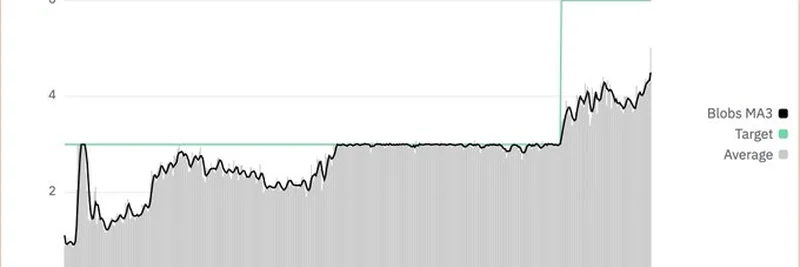Hey there, crypto enthusiasts! If you’ve been keeping an eye on the Ethereum ecosystem, you’ve probably noticed some exciting developments lately. A recent tweet from hildobby on July 22, 2025, dropped a bombshell: Ethereum’s blob occupancy has hit 75% for the first time since the Pectra upgrade. This is a big deal, and we’re here at Meme Insider to break it down for you in simple terms.
What Are Blobs, Anyway?
Let’s start with the basics. In Ethereum, “blobs” are like special data packets introduced through the Dencun upgrade (via EIP-4844). They help make the blockchain more scalable by storing large amounts of data temporarily—think of it as a short-term storage solution that lasts about 18 days. Unlike regular transaction data, blobs don’t clog up the blockchain permanently, which is a game-changer for efficiency.
The Pectra upgrade, rolled out on May 7, 2025, took this a step further by boosting blob throughput, especially for rollups (Layer 2 solutions that process transactions off-chain). This means Ethereum can handle more data and support more users without slowing down.
The Chart That’s Got Everyone Talking
The image shared by hildobby shows the average blob count per block since the Dencun upgrade. The chart tracks data from March 2024 to July 2025, with a green line marking the target (set at 6 blobs per block) and a black line showing the moving average of blobs. Here’s what stands out:
- For most of 2024 and early 2025, the blob count hovered around 3-4 blobs per block.
- After the Pectra upgrade in May 2025, the target jumped to 6 blobs, and the average started climbing.
- By July 2025, the blob occupancy hit 75%, signaling that the network is using a solid chunk of its capacity.
This spike suggests that rollups and other applications are leaning heavily on blobs to process transactions, a sign of growing adoption and network utilization.
Why Does This Matter?
So, why should you care about blob occupancy? It’s all about scalability. As more people use Ethereum for decentralized apps (dApps), NFTs, and meme tokens, the network needs to keep up. Blobs help by offloading data, making transactions cheaper and faster. The 75% occupancy post-Pectra shows that the upgrade is working, and Ethereum is gearing up to handle even more activity.
Plus, as Dan Hannum pointed out in the thread, blob-based submission strategies are key for rollups to run smoothly. This could mean lower fees and better performance for projects built on Ethereum, including those wild meme token launches we love tracking at Meme Insider!
What’s Next for Ethereum?
The conversation around hildobby’s tweet is buzzing with excitement. Some, like George Nguyen, are digging into why the chart doesn’t yet reflect the full 6/9 blob target, while others like ethdaily.eth are celebrating the “Pectra vibes.” It’s clear this milestone is just the beginning.
As Ethereum continues to evolve, keeping an eye on blob usage will be crucial. Higher occupancy could lead to more innovation in rollups and even new meme token projects that leverage this scalability. Stay tuned to Meme Insider for the latest updates and insights!
Final Thoughts
Ethereum’s blob occupancy hitting 75% post-Pectra is a testament to the network’s ongoing evolution. Whether you’re a blockchain newbie or a seasoned pro, this trend highlights how Ethereum is adapting to meet demand. Got questions or thoughts? Drop them in the comments—we’d love to hear from you!



